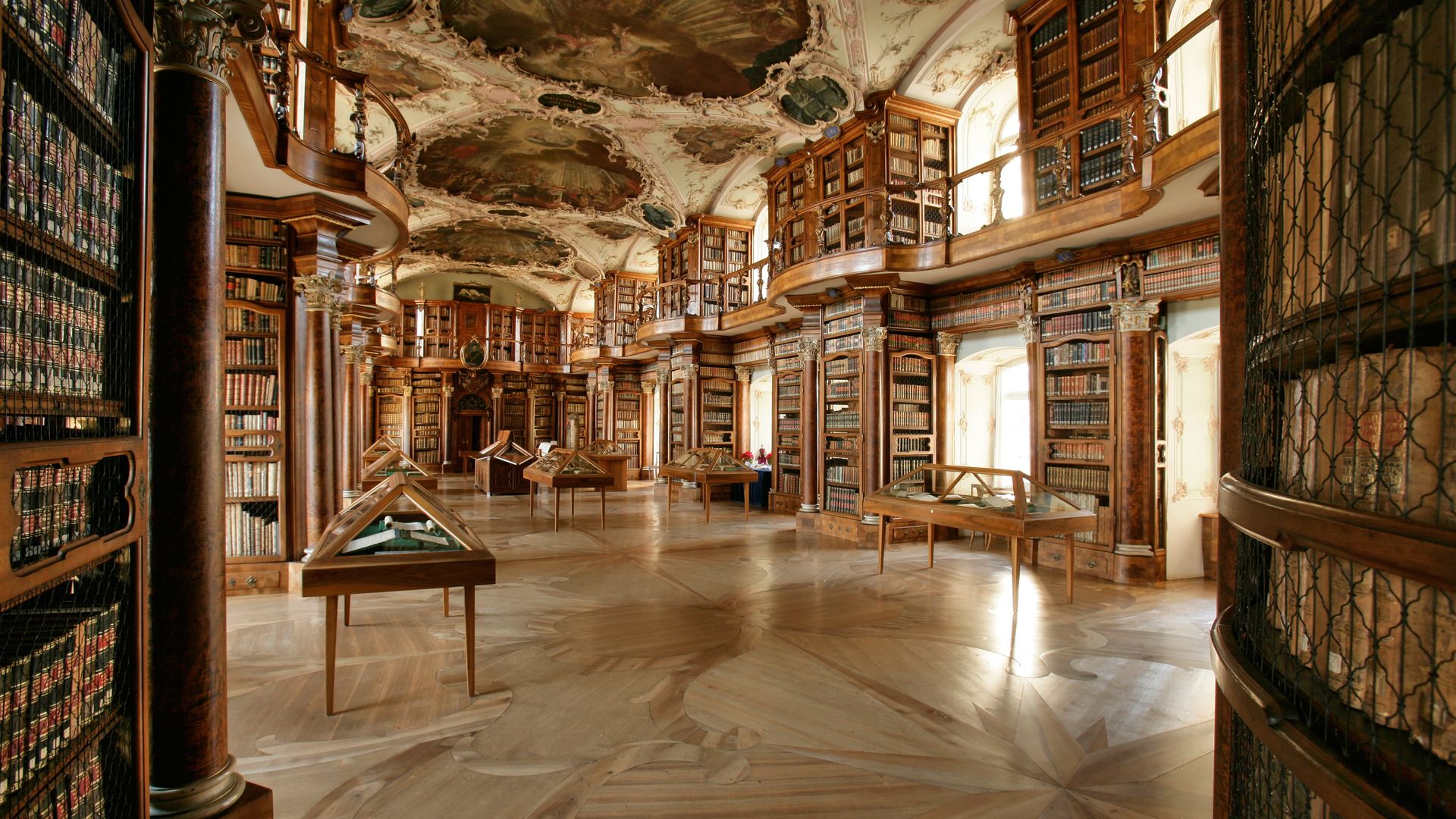St. Gallen Abbey Library
In the UNESCO World Heritage City
The Abbey District with its baroque cathedral has been a UNESCO World Heritage Site since 1983. The most famous and popular building within the former monastery complex is the Abbey Library. Every year, thousands of visitors shuffle reverently in slippers across the wooden floors of the former scriptorium of the Benedictine monks. The monks may be gone, but their library still houses tens of thousands of invaluable writings.
Here, in one of the most beautiful Rococo halls in the world, visitors can admire 170,000 printed books and – in rotating exhibitions – rare examples from a collection of 2,000 original medieval manuscripts.
A particular highlight is the famous Plan of St. Gall from the 9th century, now on public display in its original form for the first time. The exhibit is housed in the library’s new exhibition hall. This parchment is the oldest known architectural drawing of a monastic complex from the Middle Ages. It was likely created between 819 and 826 at Reichenau Abbey on Lake Constance and is today held by the Abbey Library of St. Gallen.
Another attraction for visitors is the mummy of Schepenese, which rests with her double coffin in the library. The daughter of a high priest, Schepenese lived in Thebes between 700 and 650 BCE and belonged to the city’s elite. Her mummy, along with her richly painted inner and outer coffins, arrived in St. Gallen in 1821.
UNESCO World Heritage along the SOB Lines
Impressive cultural treasures await you along the Südostbahn lines – from the baroque splendour of St. Gallen’s Abbey District to ancient winegrowing landscapes, historic old towns and remarkable industrial landmarks. Nestled in breathtaking natural scenery, these World Heritage Sites invite you to experience history in vivid detail. Just hop on, explore – and be amazed.
